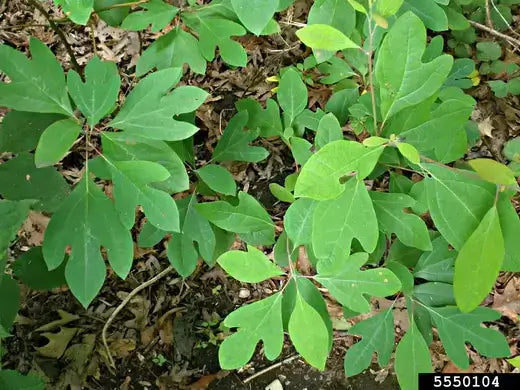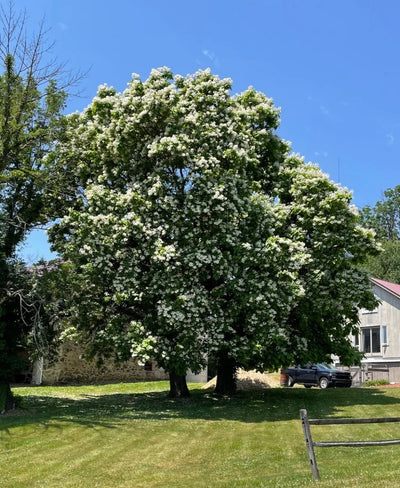The Sassafras tree, with its rich aroma, distinctive leaf shapes, and vibrant seasonal colors, stands as a captivating addition to any garden. Despite its beauty, it remains an often overlooked gem.
The Sassafras tree (Sassafras albidum) is a native Missourian tree that typically grows between 30 and 60 feet tall. This variety grows about 24 inches annually, so you can quickly have a beautiful shade tree as its canopy is almost as wide as the tree is tall.
The Sassafras Tree and Its Unique Characteristics
One of the most striking features of the Sassafras tree is its leaf variability. A single tree can have leaves with one, two, or three lobes, adding a fascinating visual appeal that changes with the seasons. The aromatic qualities of the Sassafras are another highlight. Its leaves, stems, and root bark release a pleasant scent that has found its way into perfumes and traditional teas. The aroma of this tree is so unique that the first European settlers wrote about it in their journals, and you will find that your neighbors and friends ask you about the sweet fragrance. Each part of this tree has its aroma. The bark of the tree smells like cinnamon, the roots like root beer, and the leaves like sweet lemon.As the seasons change, so does the Sassafras tree, transforming from lush green in summer to a spectacular display of yellow, orange, and red in autumn. The female tree produces a fruit resembling a blueberry in a red cup. Once the fruit ripens in the fall, it will attract many birds to your yard as they find the fruit very tasty.
Environmental Benefits and Uses
The Sassafras tree is not only a visual treat but also an ecological boon. It offers food and shelter to a variety of bird species, butterflies, and other wildlife, playing a vital role in maintaining biodiversity. Historically, Sassafras has been used in herbal medicine, showcasing its significance beyond ornamental value. Its versatility in landscape design is unmatched, fitting perfectly as a standalone feature or within a woodland garden.
The Sassafras Are Easy to Grow
Sassafras trees are hardy in USDA zones 4 through 9, meaning they can tolerate a wide range of climatic conditions across much of the United States. They are resilient in various temperatures and weather patterns, making them suitable for many gardens and landscapes.
You can use the sassafras tree in many places in your landscaping if it gets about four hours or more of sunlight daily. Gardeners often grow it in sites with soil that need to be restored because it can grow almost anywhere.
Caring for a Sassafras tree is surprisingly easy. It thrives in well-drained, slightly acidic soil but is adaptable to various soil types. The tree prefers full sun to partial shade and requires moderate watering, especially during dry periods. To keep your Sassafras healthy and well-shaped, periodic pruning and disease management are recommended.
The Sassafras tree is a true marvel of nature, offering a unique combination of aesthetic appeal, environmental benefits, and ease of care. Whether you're a new gardener or have years of experience, the Sassafras tree can make a wonderful addition to your garden.
Visit TN Nursery's shop page today to select your very own Sassafras tree and bring a touch of nature's magic to your backyard!
If you have any questions about the Sassafras tree or if you have any other plant needs, don’t hesitate to contact us at customerservice@tennesseewholesalenursery.com, we’d love to hear from you!

